Protecting and restoring Ann Arbor's natural areas and fostering an environmental ethic among its citizens.
Volume 23, Number 4
Winter 2018
Park Focus: Foxfire West Park
Rebecca Snider, Outreach Assistant
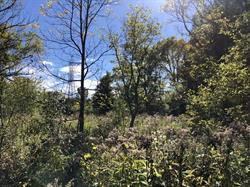 The fen at Foxfire West
The fen at Foxfire West
The sounds of hand saws and snapping twigs greet me as I enter Foxfire West Nature Area. It is a NAP Stewardship Workday and volunteers are cutting invasive shrubs that are encroaching on the sedge meadow near the entrance. We often have workdays here in fall and winter so volunteers can help us with the monumental task of keeping non-native plants out of this wetland.
But the workday is not why I'm here. This is my first time visiting this park and I want to see the fen. A fen is a peat-forming wetland, like a bog, except fens are fed by groundwater and are less acidic. This particular fen is a prairie fen, which are dominated by grasses, sedges, and wildflowers, and often have standing water only in the spring. Because the landforms needed to create a fen are the result of glaciers, most are found in the upper midwest. But even in this part of the world they have become rare, destroyed to make room for agriculture and development.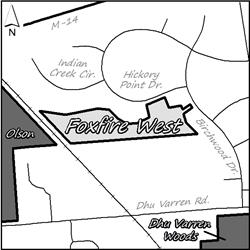
Since Foxfire West has no trails, I wander, map in hand, heading roughly west. The woodland is mostly open and easy to walk through. Historically this was likely oak savanna, but now there are many maples in the canopy as well. It's early fall and only a few wildflowers can be found here and there on the forest floor. I see jack-in-the-pulpit, flowers long-gone, with its red berries, and blue-stemmed goldenrod, one of a few species of shade-growing goldenrods.
A patch of jewelweed grows on the edge of a small stream. I carefully step on the wet rocks to cross. The ground gets muddy here and I wish I had brought my boots. I spot several crayfish holes in the mud. Most of Foxfire West is wetland and the drier parts of the woodland are south of the stream. Soon I find myself stepping on scattered branches of buckthorn… the workday volunteers were cutting here too.
As I get to a thick patch of horsetail the hum of insects picks up. I know I must be close. Because it somewhat resembles bamboo, I always think horsetail looks out of place in Michigan, even though it's native. Perhaps that's just because it belongs in a different time: horsetail has survived since before the days of the dinosaurs. I delicately walk though this soggy patch and then push my way through a wall of shrubs, feeling the warm sun on my head as I emerge. I've made it to the fen.
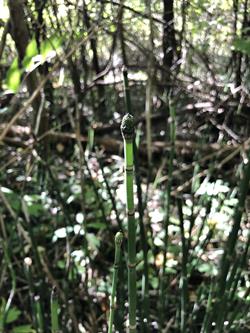 Horsetail
Horsetail
Since there is no standing water here, I can walk through the plants. The flora is very similar to the sedge meadow at the entrance to the park. I see Canada goldenrod, with its plume of yellow flowers, and some white asters. The pink flowers of Joe-pye-weed have turned to fluffy brown seed heads. I'm amazed at how tall the plants are. I'm almost six feet tall and I can barely see over them.
I hear something moving in front of me, but I can't see what it is. Several species of frogs live here, as well as milk snakes, which are rare in the city. Catbirds and Song Sparrows have been spotted here as well as spring migrant birds. Elsewhere, prairie fens are habitat for the federally threatened eastern massasauga rattlesnake and the federally endangered Mitchell's satyr butterfly, both at risk due to habitat loss.
NAP hopes to conduct a controlled burn here soon. Historically Native Americans would have burned the adjacent oak savanna and fire would have spread to the fen. Today, we use fire to control non-native plants. Fire can also be a rejuvenating force. By removing the duff layer, it allows seeds that have been sitting in the soil, potentially for years, to grow. A burn would bring new beauty to this fen next summer.
I've lingered long enough. It's time to get back to my family and the busyness of life. Spending time out here, surrounded by the tall plants and the buzzing insects has refreshed me. Before I leave I wonder: how many people have stood in this special place? How many people even know it's here?
Join us on February 17 for a workday at Foxfire West Park. See the
calendar for details.
Coordinator's Corner: The Healing Qualities of Nature
Dave Borneman, Natural Area Preservation Manager
I'm writing this in the final days before the mid-term election. And you'll read it after the election is done and over with. That's probably for the better. This way, there will be no possibility of me advocating for a candidate, or a ballot initiative, that you don't support. There can be no wedge driven between us here based on politics.
I'll leave it to the social scientists to tell us why we are so divided now as a society. All I know is that I miss the old days. Perhaps it's just that I was more naïve then, but it didn't matter to me in the olden days whether the person I was out in nature with leaned to the left or the right politically. And most of the time, I didn't even know.
I've heard firsthand accounts from participants in week-long Outward Bound courses who tell me that during their entire 7 days of intensive, challenging, group survival in the wilderness, they were forbidden to discuss politics, nor any other details about their personal lives or their careers. The point was to get to know each other as people, as colleagues, there in the moment, during that shared experience, free of the constraining barriers that labels often foist upon us. In those trying circumstances, your political party doesn't matter. All that matters is if you are part of the team, if you're working together toward the common goals of survival and group accomplishment.
I think that's what our country, our society, needs now. How refreshing it would be to work alongside a stranger, or an acquaintance, in a park this winter, cutting invasive shrubs and dragging them through the snow. Enjoying the physical exertion to help keep you warm. Squinting at the dazzling sunlight on the brilliant white snow. Unknowing, and indifferent, about your coworkers' political views. Just appreciative of their camaraderie and their efforts to work alongside you toward the common goal of making our parks a little better, a little more natural, a little more like what they were in the good old days.
Our fractured society is in desperate need of some healing, and that healing has to start with each of us, individually. Nature can do that for us, if we will only give it the opportunity. That's one of the many immense benefits of our magnificent city park system. You don't need to drive three hours to commune with nature; you can probably do it with just a short walk out your front door, right here in Ann Arbor.
So whether you join us for a stewardship workday, or just enjoy a tranquil hike through your favorite natural area, I hope you will let Nature help to calm and re-center you after this divisive election season. And may we all resolve to treat each other with a bit more civility in the New Year.
I go to nature to be soothed and healed, and to have my senses put in order. - John Burroughs, American naturalist and essayist
A Winter Day's Work
Chris Robey, Conservation Worker
7:55 a.m. We roll up to the NAP office, snow rasping beneath our trucks' tires. We stomp the snow from our boots—thwak, thwak—then punch in the code to unlock the front door and step inside. It's quiet—we're the first ones in. Yesterday's work gloves sit drying in front of the floor heater, lined in rows. In the kitchen, we set a pot of coffee to brewing.
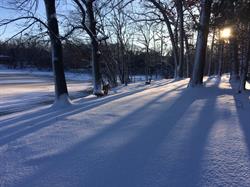
The sun rises over snowy South Pond Nature Area
Soon Mike pulls up, along with other NAP staff. Hunched around our steaming mugs in the main conference room, we run through our day's work. We're headed to Barton, where we'll push back the buckthorn and honeysuckle thickets encroaching on the high-quality prairie remnant near the railroad. While we're there, we can also nab a stand of black locust poles edging the railroad right-of-way.
We pour our coffee into thermoses then head out to the garage to load the trucks. Brush cutters, chainsaws, and associated gear—personal protective equipment, fuel, two-cycle and bar oil. It's not yet started snowing again but it's supposed to later in the day. Looking out over South Pond, the sun's first auburn rays kiss its frozen edge. When we're all loaded up, we pile back into the trucks and head out over roads whisked by fine ice flurries.
After picking up herbicide from the storage shed, we arrive at the worksite. We'll work in pairs, one to cut brush and another to apply the herbicide—Pathfinder II, an oil-based solution of triclopyr— directly to the cut stumps with a sponge applicator. This method, called a cut-stump treatment, is best done in cold weather when the sap flow of woody invasives has shifted downward, into the roots. The oil-based solution ensures that the herbicide doesn't freeze and is fully absorbed by the plant.
We split the necessary tasks amongst ourselves in the traditional way—a quick, fierce round of rock-paper-scissors. Partway through the day, we'll switch so everyone gets the chance to stay warm while running a power tool. The brush cutters fuel up their respective tools and test-start them to see which ones are acting finicky. The applicators check their herbicide levels, mix more if necessary, and retrieve their favored herbicide wands. When the old wands proved difficult to use, we devised a jury-rigged solution: old hockey sticks affixed with sponges zip tied to the ends. Works like a charm, until it doesn't. The work is hard on the sponges, especially when there's thorny black locust involved, and by day's end they'll be in tatters.
This is not to say that running the power tools is the fun, easy job. Some of the tools are particularly finicky, especially in cold weather. For instance, Holly, one of our chainsaws—yes, we name them—flat out won't start some days. Or it'll work like a charm for a time then, as soon as you set it down to pause for a breath and let the applicators catch up, it'll burp and give you nothing more when you try to start it again.
You've also got to remember to strip layers as you work to avoid getting too sweaty, crew leader Amy Wells reminds us. It's good to be warm, but not too warm. Sweat too much and you'll become chilled.
Patience is a virtue well-served when the cold weather makes every little task just that much harder. But winter restoration work is not without its redeeming moments. As second-year crew member Kayla McGuire recalls, you may be bitterly cold and unable to think of anything else until you pause to look out over the Huron just as big fat snowflakes start to fall. It seems like you'll never be warm again, but for one moment, as fleeting as a snowflake's trail through the air, you're able to look out and experience the feeling of being totally absorbed by just how beautiful the world can be. You felt it often as a child, and now, even as an adult grown wary of the world's discomforts, its loveliness can still stun you.
NAPpenings
Welcome new Park Stewards!
Michael Benham
Swift Run Marsh
David Ferguson
Argo Nature Area
Brian Glass
Cedar Bend Nature Area
Bill Rosen
White Oak Nature Area
Peter Smith
Miller Nature Area
Thank You!
Many thanks to the groups who volunteered with NAP recently. We could not make such a difference without you!
Ann Arbor Trail Runners
Beth Israel Congregation High School Program
Concordia University
EMU Delta Zeta
EMU Vision
Expedia Ann Arbor
Greenhills School
IMG College
Indian American Student Association
Mission Earth Environmental Group
UM Community Scholars Program
UM Delta Sigma Pi
UM Environment 201 Class
UM Medical School
UM Running Club (MRun)
Wesley Foundation at UM
YMCA YVC
Thank you to the local organizations that donated prizes for our Volunteer Appreciation Poluck!
Bløm Meadworks
www.drinkblom.com
Huron Hills Golf Course
www.a2gov.org/golf
Leslie Science and Nature Center
www.lesliesnc.org
Motawi Tileworks
www.motawi.com
Radius Garden Tools
www.radiusgarden.com
Veterans Memorial Park Ice Arena
www.a2gov.org/vets
Wild Type Nursery
www.wildtypeplants.com
Washtenaw Audubon Society
www.washtenawaudubon.org
Conferences Sponsored by NAP
The Stewardship Network
The Science, Practice, and Art of Restoring Native Ecosystems Conference
January 11-12, 2019
The Stewardship Network presents this annual conference at the Kellogg Conference Center at Michigan State University in East Lansing. Presenters cover a wide range of topics including environmental justice, watershed conservation, and much more! See
www.stewardshipnetwork.org to register or for more information.
2019 Burning Issues Workshop
February 5-6, 2019
Presented by:
Lake States Fire Science Consortium, Michigan Prescribed Fire Council, Tallgrass Prairie and Oak Savanna Fire Science Consortium, Michigan National Guard
This annual wildland fire workshop explores topics that are relevant to those working with fire across the state of Michigan and the Upper Midwest. It takes place at Fort Custer National Training Center in Battle Creek. See
lakestatesfiresci.net to register or for more information.
Citizen Pruner Training
2 part training: both sessions required
Classroom Session: Wednesday, January 23, 6:30 to 8:30 p.m.
Outdoor Skills Session: Saturday, January 26, 10 a.m. to noon
Looking for a new and unique way to volunteer in the community? Consider becoming a Citizen Pruner! Citizen Pruners attend workdays to care for newly planted city trees. We'll teach you everything you need to know. Please register by January 22, by emailing [email protected] or calling 734.794.6627.
Staff Updates
Farewell...
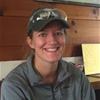 Anna Tawril, Field Crew
Anna Tawril, Field Crew
Thank you to everyone at NAP for the wonderful experience. I've learned so many valuable skills and information about implementing restoration. I'm sad to leave the NAP community and to trade in my outdoor office, but I'm excited to further my education. I have recently started graduate school at Oakland University and am pursuing a M.S. in biology; my research focuses on native plants and pollinator conservation. I hope to see you all when I come back as a volunteer!
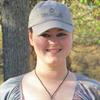 Morgan Boyer, Field Crew
Morgan Boyer, Field Crew
It has been a pleasure working with NAP for the past three years. I will miss the smoky burns and exploring and restoring the remote corners of the parks. Most of all, I will miss working with some of the most wonderful people I have had the good fortune to meet. This goodbye from NAP does not mean goodbye to the city. I have accepted the new Deer Educator position within the city government and I look forward to continuing to serve the community that I have come to cherish.
 Alex Cherry, Workday Coordinator
Alex Cherry, Workday Coordinator
After over a year at NAP as the Workday Coordinator, I decided to follow my dream of working and living in the mountains. I would like to thank everyone for the great experiences. It was a joy to talk with people every day about their passions. Prescribed burns and volunteer workdays produced many of my favorite memories while part of the NAP team. I look forward to what this great organization has in store for the future!
 Liz Berghoff, Field Crew
Liz Berghoff, Field Crew
I've had an amazing year working with the crew and learning what I can from fellow NAPpers. I'm excited to continue my career in conservation at Niswander Environmental where I'll be working as an ecological technician. It's difficult to say goodbye, but I'm thankful for the support I've gained from everyone at NAP.
Would you like to be part of the NAP Staff team? Follow the city jobs website (a2gov.org/jobs). Positions can open throughout the year.
NAP also has unpaid internships that provide valuable experience! For internship information contact NAP directly: [email protected] or 734.794.6627.
NAP by the NUMBERS: 25 Years in Review
Here's a look at just how much we've accomplished in the last 25 years:
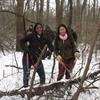 Volunteers
Volunteers
22,245 total volunteers
147,792 total volunteer hours
1,686 volunteer workdays
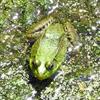 Frog and Toad Survey
Frog and Toad Survey
3,858 volunteer hours
18,213 observations
10 species recorded
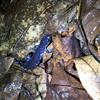 Salamander Survey
Salamander Survey
2,771 volunteer hours
6,611 observations
7 species recorded
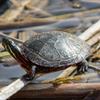 Turtle Survey
Turtle Survey
743 volunteer hours
2,280 observations
7 species recorded
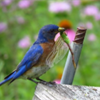 Breeding Bird Survey
Breeding Bird Survey
6,344 volunteer hours
240,822 observations
243 species recorded
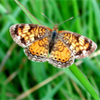 Butterfly Survey
Butterfly Survey
2,222 volunteer hours
18,153 sightings
88 species recorded
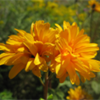 Plant Survey
Plant Survey
1,127 volunteer hours
33,822 observations
1,959 species recorded
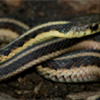 Other Surveys
Other Surveys
7 species of snakes recorded
5 species of bats recorded
 Photo monitoring
Photo monitoring
829 volunteer hours
7,500 photos taken
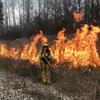 Invasive Species Control
Invasive Species Control
113,980 staff and volunteer hours
463 total burns
